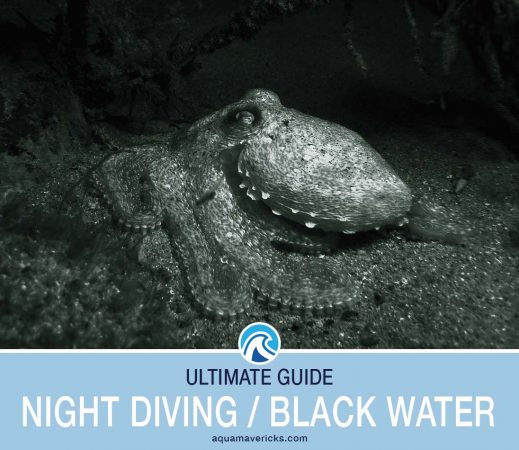
What is Night Diving / Black Water Diving Like?
We get a lot of questions about night diving, black water diving and the odd question about UV or fluorescence diving. So we thought we’d address some of the questions here for those looking to get started or just curious.
The incredible footage below is a short video showing images of fluorescence diving.
Why would I dive at night? What will I see?
Diving at night lets you explore the nocturnal reef environment. Some fish ‘go to sleep’ and wedge themselves in the reef hoping for dawn; it’s probably the only time you’ll see a trigger fish cower. Parrot fish will take this one step further and hide their scent from hunters by creating a membrane-like bubble around themselves which they ‘spit’ from their mouth.
Barracuda swoop in to hunt, often assisted by your torchlight and lionfish are known to take advantage of the spotlight you are creating in quite a greedy fashion. Octopus come out to play at night; watching them morph across the reef is something you will never forget. Cuttlefish are less skittish at night and give quite a colour display, they hunt at night too, and that’s terrific to see. If you are in a location where sharks and stingrays make their home on the reef, then you will find them quite active too.
In the video above you’ll see a group of night divers in Hawaii surrounded by Rays. A truly exhilarating experience!
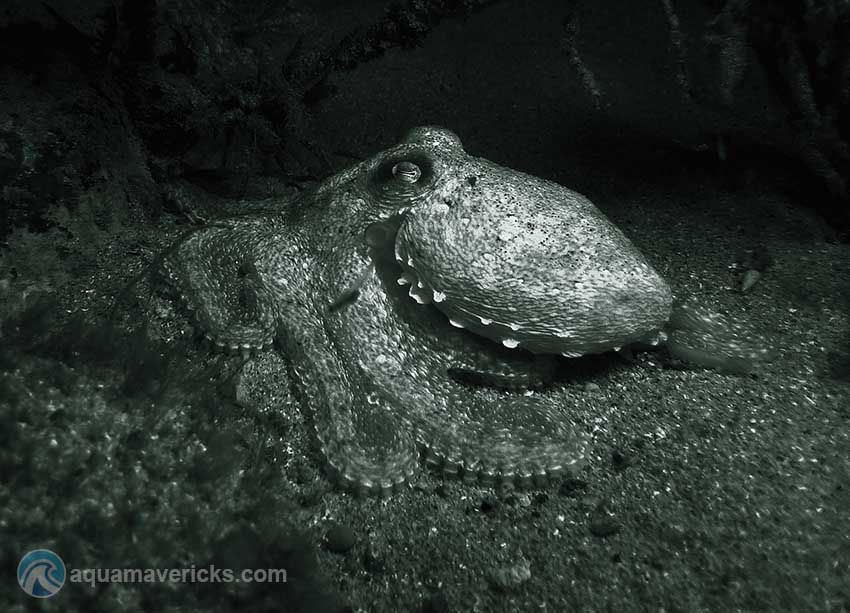
Octopus
If you are a critter lover and an enjoyer of the weird and wonderful, then darkness is your friend. Any number of crab varieties, lobster, and odd scuttlers could be waiting in the shadows. Walkman, stonefish and scorpion fish seem to be emboldened by darkness, and it’s not uncommon to see these usually hard to find fish muscling their way across the reef or ocean floor.
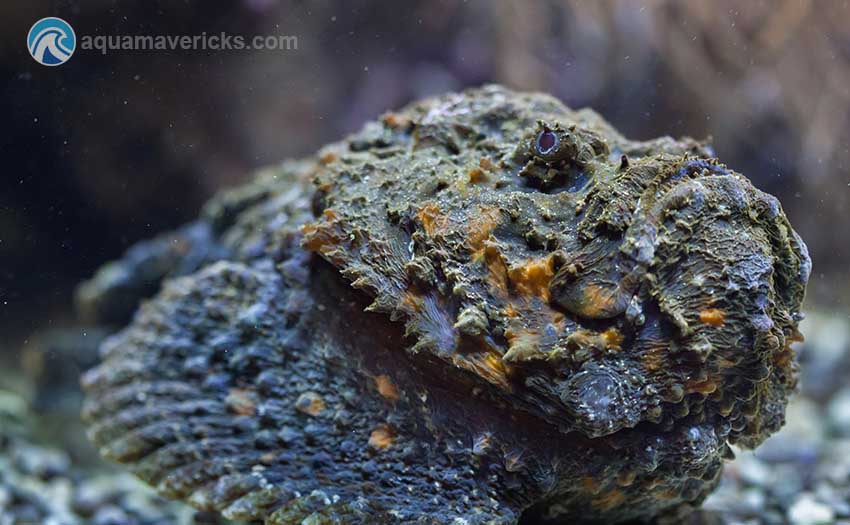
Stone fish
Nudibranch, pleurobranch and wart slugs venture out from their hiding spots, and some offer flamboyant displays of ‘swimming’ like the infamous Spanish Dancer. Feather stars unfurl and ‘walk’ around the reef with a jauntiness in their step which will make you smile and some merrily take flight and spider-swim their way passed.
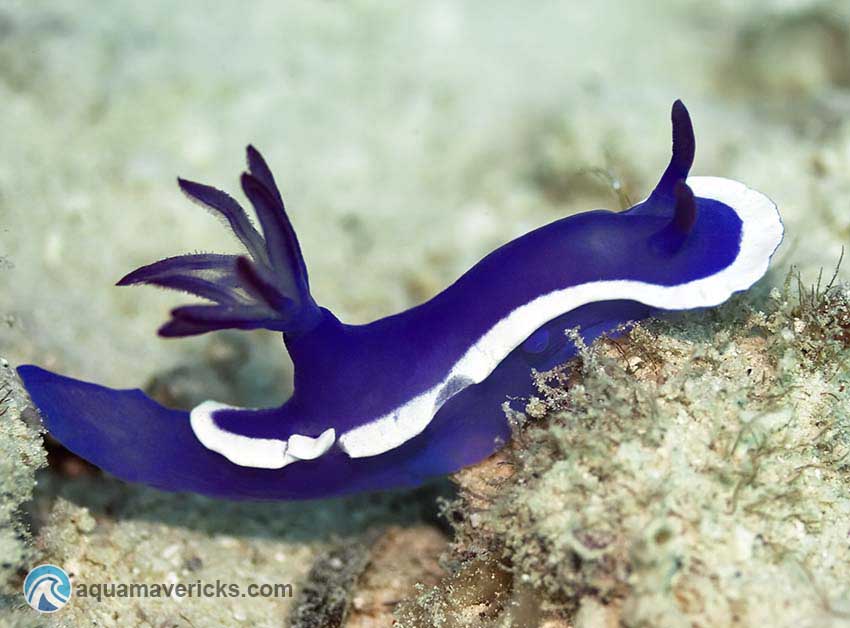
Nudibranch
In some areas, the ocean offers a stunning display called bioluminescence which is hard to describe; it’s an effect somewhere between fairy dust and the matrix code that happens when you disturb tiny microorganisms. If you wave your hand in the water it looks like tiny sparkles twinkling; it can also be seen in the bow wave or breaking waves on the shore.
The video below beautifully illustrates bioluminescence.
During the day, even in the brightest sunshine and the clearest water, red is the first colour that is absorbed, and this removes the rich warmth from the reef-scape. At night, you will almost feel like you are painting the reef as your torch adds a light source which makes the rich reds and oranges visible.
Diving after the sun goes down puts a whole different slant on a familiar dive site and gives you another opportunity, or excuse if you need one, to head out diving. You will see different marine life and observe some different behaviour too.
Is diving at night scary or dangerous?
As you enter the inky black water for your first night dive, you are going to question your sanity and the Jaws theme tune is going to play in your subconscious. However, that’s as scary as it gets and it’s all in your mind. You will descend with trepidation but take it slowly and give yourself time to adjust. It is going to feel a little odd as your vision is limited to only what your torch illuminates, so you need to take some moments to orientate yourself and get the feel of your buoyancy.
Most divers find that after the initial, ‘what on earth have I got myself into?’ has passed, that they find night diving a very calm and relaxing experience. Having said that, night diving isn’t for everyone, but you do have to take the plunge to decide for yourself. Assuming that you don’t leave your common sense on the shore and that you are following established protocols, diving at night has no more risk that diving during the day.
For those who have never dived at night, their biggest fear seems to revolve about being lost in the dark, but you should consider that you can be seen far easier at night with a torch than you can during the daytime. Having a backup torch in case of failure is one of those common sense, established protocols mentioned earlier.
[bctt tweet=”Common sense + established protocols = SAFE NIGHT DIVING” username=”aquamavericks”]
Is diving at night colder than diving during the day?
On the whole the water temperature should not vary from what it was in the daytime. What does change is the air temperature. Remember that even diving in the tropics will chill you and peeling off a wetsuit at night with even a light tropical breeze can be surprisingly chilly. All you need to remember is to take something warm and dry to change into after diving; take a layer more than what you needed before you splashed in to counteract any chill and that should be okay.
What equipment do I need to dive at night?
Apart from your normal set up, you are going to need a torch and a backup, just in case. Many divers also use a third light which they attach to their tank valve so that they can be seen from behind. In years gone by this used to be a glow stick or cylume, which when cracked glowed neon. Their environmental impact has seen a move to battery operated versions.
How do divers communicate at night?
You communicate in the same way as you would during the daytime, you just need to remember to shine your torchlight on your hands. There are some variations for those air signals that need two hands to perform, and some dive teams find it easier to show their gauges. Be sure to check with your guide or buddy so that there are no misunderstandings.
At night the ‘okay’ signal can be shown by making a large circle with your torch like you were painting the letter ‘O’ much like you would with a sparkler. To communicate that you are not okay you would shake the torch from side to side quickly, like you were drawing a horizontal line back and forth. Although both of these methods can be used underwater, they make more sense to use when there is distance between you and who you are communicating with, for example, if you were letting the boat crew or surface cover know your situation.
How do I read my gauges at night?
All analog gauges will glow at night if you give them ‘fuel.’ All you need to do is hold your lit torch directly on them to juice them up, they will glow but gradually fade. Reapply light to reactivate, and off you go. Ensuring you do this as a buddy or dive team simplifies the air check process considerably.
Some dive computers have backlights that can be set to permanently on, some will illuminate for a given number of seconds once a button is pressed and some glow in the same fashion as analog gauges. Read your manual to find out which yours is.
Do I need any special training to dive at night?
Technically you don’t need to complete any training to night dive i.e. you don’t need a license or certification specifically for night diving, but most dive operators will ask you to undertake the basics. The simplest form would be just one dive under the supervision of an instructor, each operator is different so ask.
While you don’t need to take training, it can certainly enhance your experience and take away some of the angst you might be feeling. You will be able to practice certain procedures and experience this new facet of diving in an environment designed to teach you about it.
You will learn emergency procedures, practice torch use and communication, learn about torches and other lighting options, practice what to do if you have a failure, know what to do in a lost or missing buddy scenario, understand more about conditions for night diving, learn how to deal with disorientation, and be coached through every step of making a dive at night and how it differs from diving during the day.
Can I take pictures while diving at night?
The simple answer is yes but get comfortable with night diving first; juggling a camera and a torch in darkness underwater is no mean feat. Sometimes it’s best to leave the camera on land and just enjoy the dive.
If you do decide to have a go, do make sure you have excellent buoyancy and take the dive very slowly. Think about your gear; it’s unlikely that your camera’s inbuilt flash is powerful enough and your torchlight is not the same colour as your camera’s flash so that it will show on any photos. For good results, you will need a strobe, you then have to consider how to focus remembering that you can’t use your torch. Most divers use a focus light attached to their camera or built into their strobe as both their focus light and primary dive torch too.
What is UV or fluorescence night diving? Can I do it?
You might hear this type of diving referred to as glow diving too. Instead of a regular torch, you dive with a black light or UV torch and wear a filter over the top of your mask. This gear allows you to see the light waves usually invisible to humans; the effect is a funky glow in the dark Avatar-like experience. It’s both fascinating and great fun.
Glow diving is available around the world but requires the operator to have the necessary kit. In busy dive locations, you are likely to find at least one operator with the tools for the job. You are going to need to have some night diving experience and excellent buoyancy; black things like sea urchins disappear under black lights, so you do need to be in control.
What is blackwater diving? Can I do it?
Blackwater diving takes night diving one step further. Whereas night diving takes place on a reef or wreck in shallow water close to the shore, blackwater diving turns this on its head adding a heap of exhilaration. Each night, planktonic animals rise from the depths, and in turn, they draw predators; blackwater diving allsows you to view this spectacle. To take part, you will head miles offshore into waters that plummet many hundreds of meters to dive in the inky black nothingness of open water.
The dive boat will deploy some structure or line and float set up into the water with bright lights attached to it. The lights attract the weird, wonderful, and curious from the depths and surrounds, and will also act as your reference. Typically you’d wait around half an hour for the lights to conjure ocean wonders before you drop overboard.
If you want something informative take a look at the night diving video below, with footage from a blackwater drift dive.
What you might see will vary but larval fish, cephalopods, jellies, and many minute marvels await; it will be an experience like no other and one you won’t forget.
Clearly, this is not for the faint-hearted, no matter how comfortable you are as a diver I can’t imagine anyone not having some trepidation. Operators will require you to have a good level of experience and comfort which might vary from 50-100 dives. They will certainly expect you to have excellent buoyancy and previous ‘normal’ night diving experience.
What are the Best Locations for Black Water Diving
If you can’t wait to try this, you need to be booking your next scuba diving vacation in Palau, Hawaii, Florida, or Honduras.
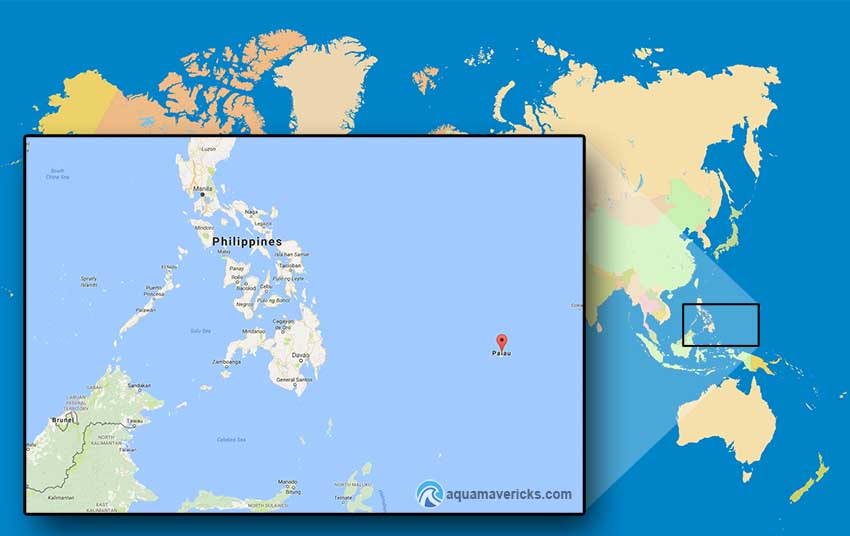
PALAU
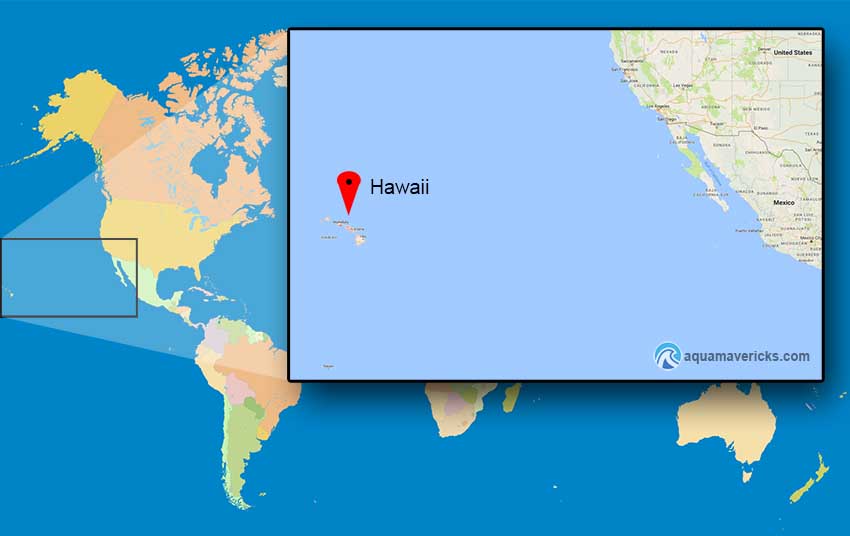
HAWAII
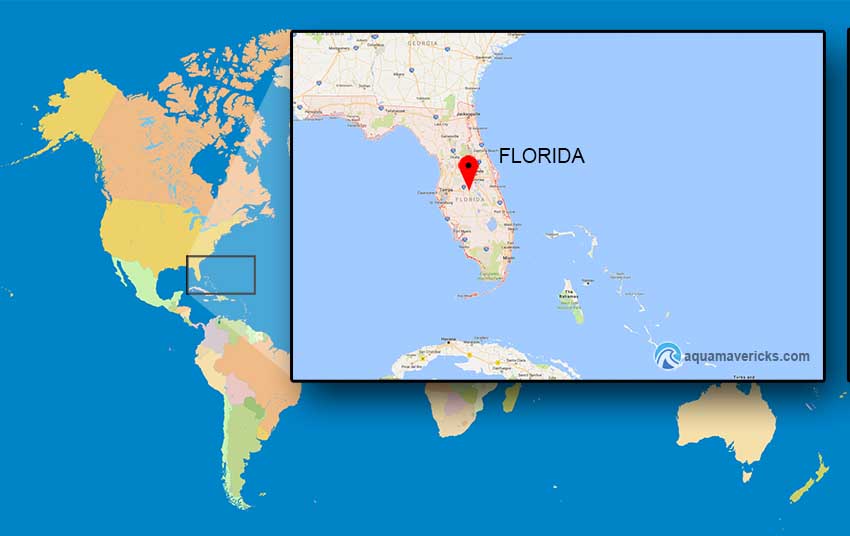
FLORIDA
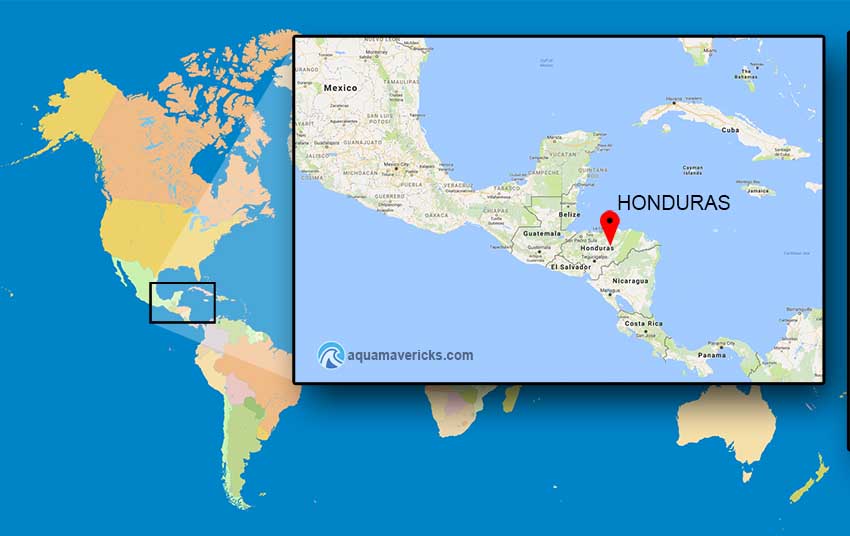
HONDURAS

